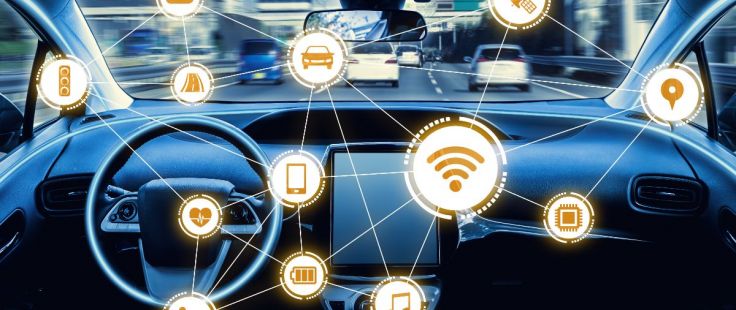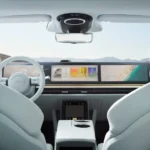Electric vehicles (EVs) have gained significant attention in recent years as a sustainable and eco-friendly mode of transportation. One critical factor influencing the widespread adoption of electric vehicles is their range, the distance they can cover on a single charge. In this blog, we’ll explore Impact of Artificial Intelligence on Electric Vehicle, making them more efficient and appealing to a broader audience.
Understanding Electric Vehicle Range
Before delving into the impact of AI, it’s essential to understand how electric vehicle range is determined. The range of an EV depends on various factors such as battery capacity, driving conditions, and external temperature. Traditionally, range estimation relied on fixed algorithms that did not adapt well to real-world scenarios, leading to inaccurate predictions.
AI-Powered Range Prediction
Artificial intelligence has emerged as a game-changer in predicting and optimizing electric vehicle range. By leveraging machine learning algorithms, AI can analyze vast amounts of data in real-time, considering factors like driving habits, weather conditions, and traffic patterns. This dynamic approach provides more accurate predictions compared to static algorithms.
Machine Learning in Action
Machine learning models process historical data to learn patterns and trends, enabling them to make predictions about future events. In the context of electric vehicles, these models can adapt to individual driving behaviors, refining their predictions over time. This adaptability leads to more precise estimations of range, addressing the limitations of traditional methods.
Adaptive Energy Management
AI plays a crucial role in enhancing electric vehicle efficiency through adaptive energy management systems. These systems continuously monitor and adjust various parameters, such as throttle response, regenerative braking, and energy consumption, to optimize the vehicle’s performance in real time. As a result, electric vehicles equipped with AI-driven energy management systems, including those involved in Car Removal Canberra, can achieve better mileage and extended range. The integration of AI not only contributes to improved environmental sustainability but also enhances the overall functionality of electric vehicles, making them more efficient and adaptable to various driving conditions.
Real-Time Optimization
Unlike traditional systems with fixed algorithms, AI-driven adaptive energy management operates in real-time. It responds to immediate driving conditions, ensuring that the electric vehicle maximizes efficiency at any given moment. This real-time optimization not only improves range but also enhances the overall driving experience for EV owners.
Predictive Maintenance for Battery Health
Batteries are a crucial component of electric vehicles, and their health significantly influences the vehicle’s range. AI contributes to electric vehicle longevity by implementing predictive maintenance models. These models analyze battery performance data to predict potential issues before they occur, allowing for timely maintenance and preventing unexpected range degradation.
Enhancing Battery Lifecycle
Through continuous monitoring and analysis, AI identifies patterns indicative of potential battery issues. This proactive approach enables electric vehicle owners to address concerns promptly, preserving the health of the battery and extending its overall lifespan. As a result, EVs equipped with AI-driven predictive maintenance exhibit better long-term performance and sustained range efficiency.
Conclusion
In conclusion, artificial intelligence is reshaping the landscape of electric vehicles by significantly impacting range optimization. Through machine learning algorithms, adaptive energy management systems, and predictive maintenance models, AI ensures that electric vehicles are not only environmentally friendly but also practical for everyday use. As technology continues to advance, the synergy the Impact of Artificial Intelligence on Electric Vehicle will likely play a pivotal role in accelerating the shift towards sustainable and efficient transportation.


